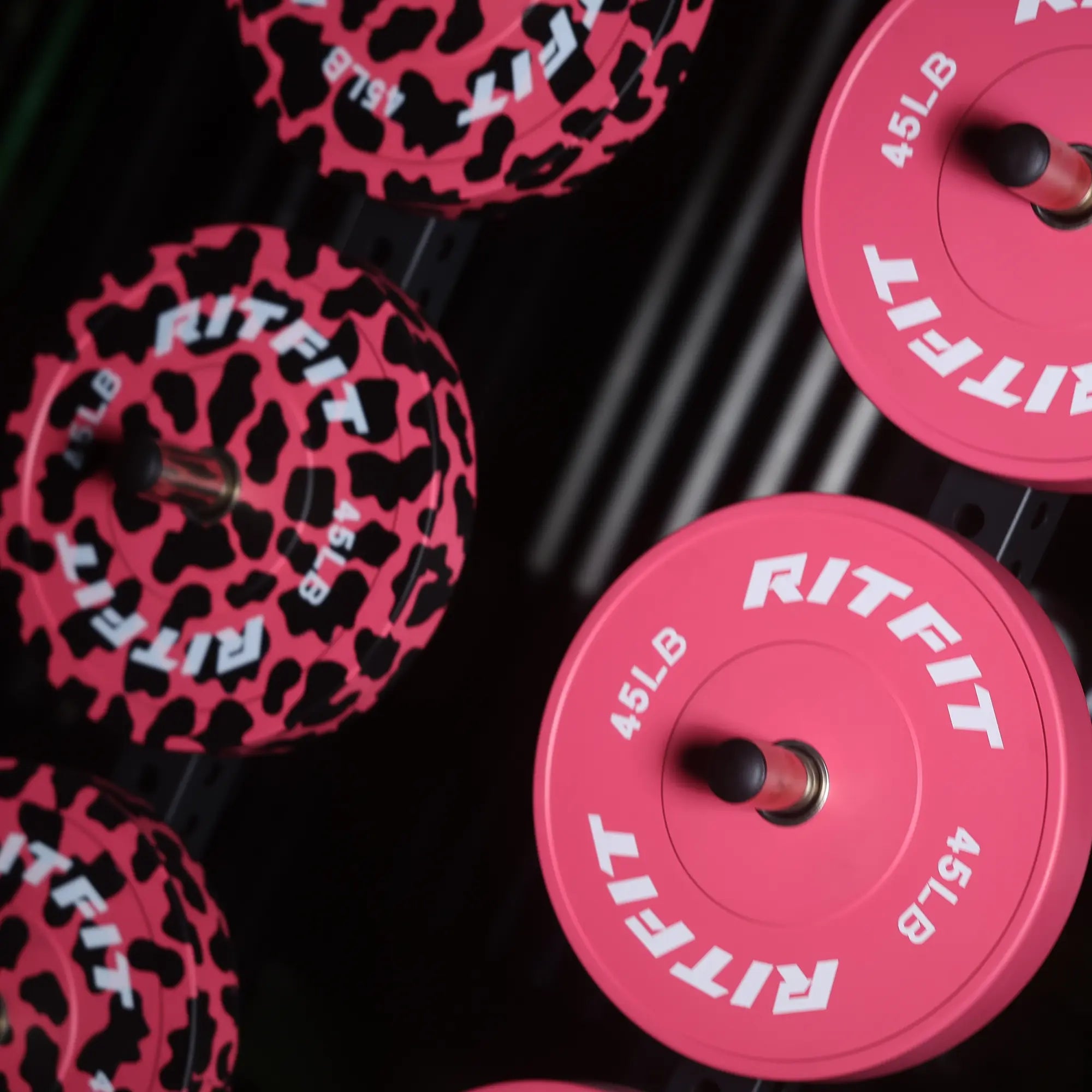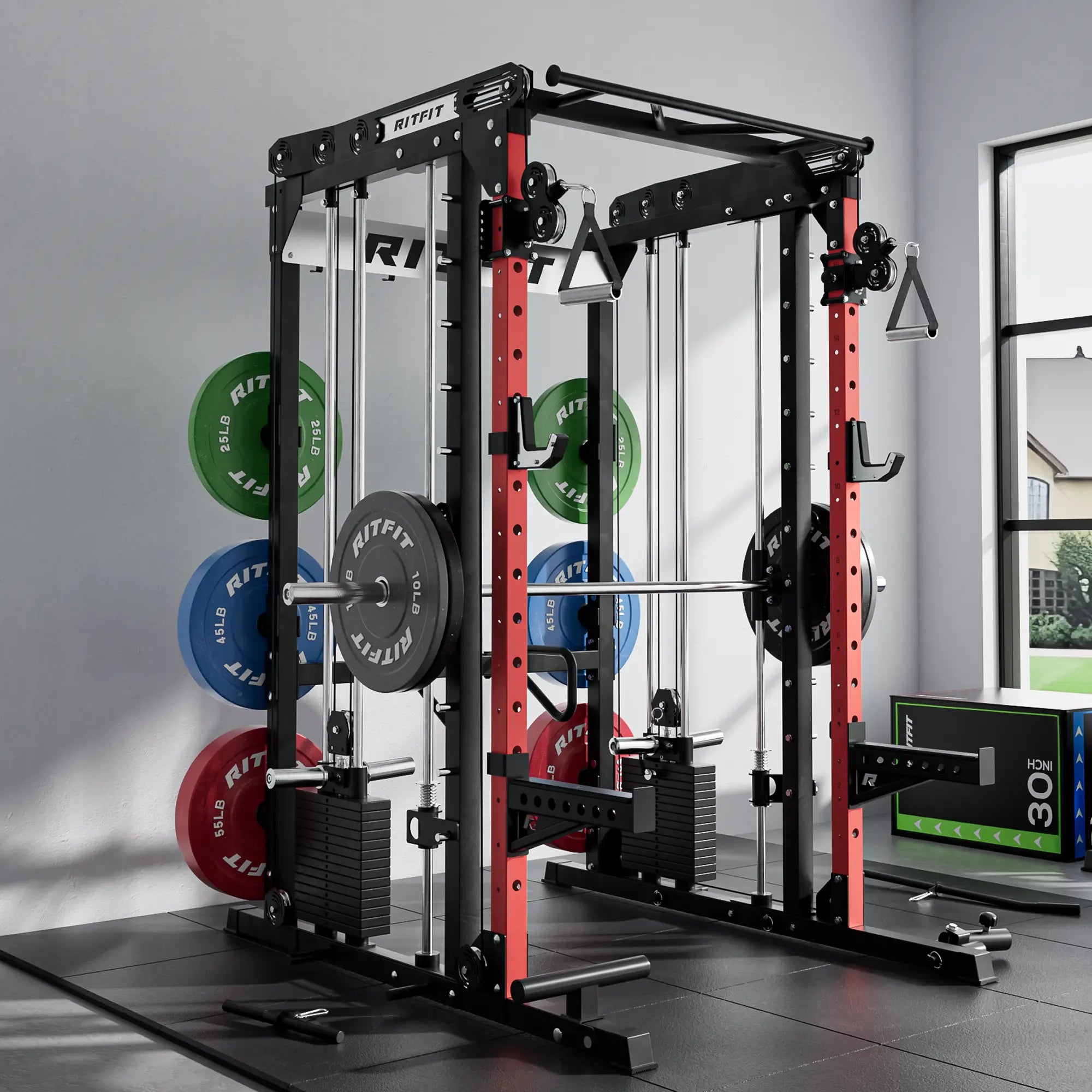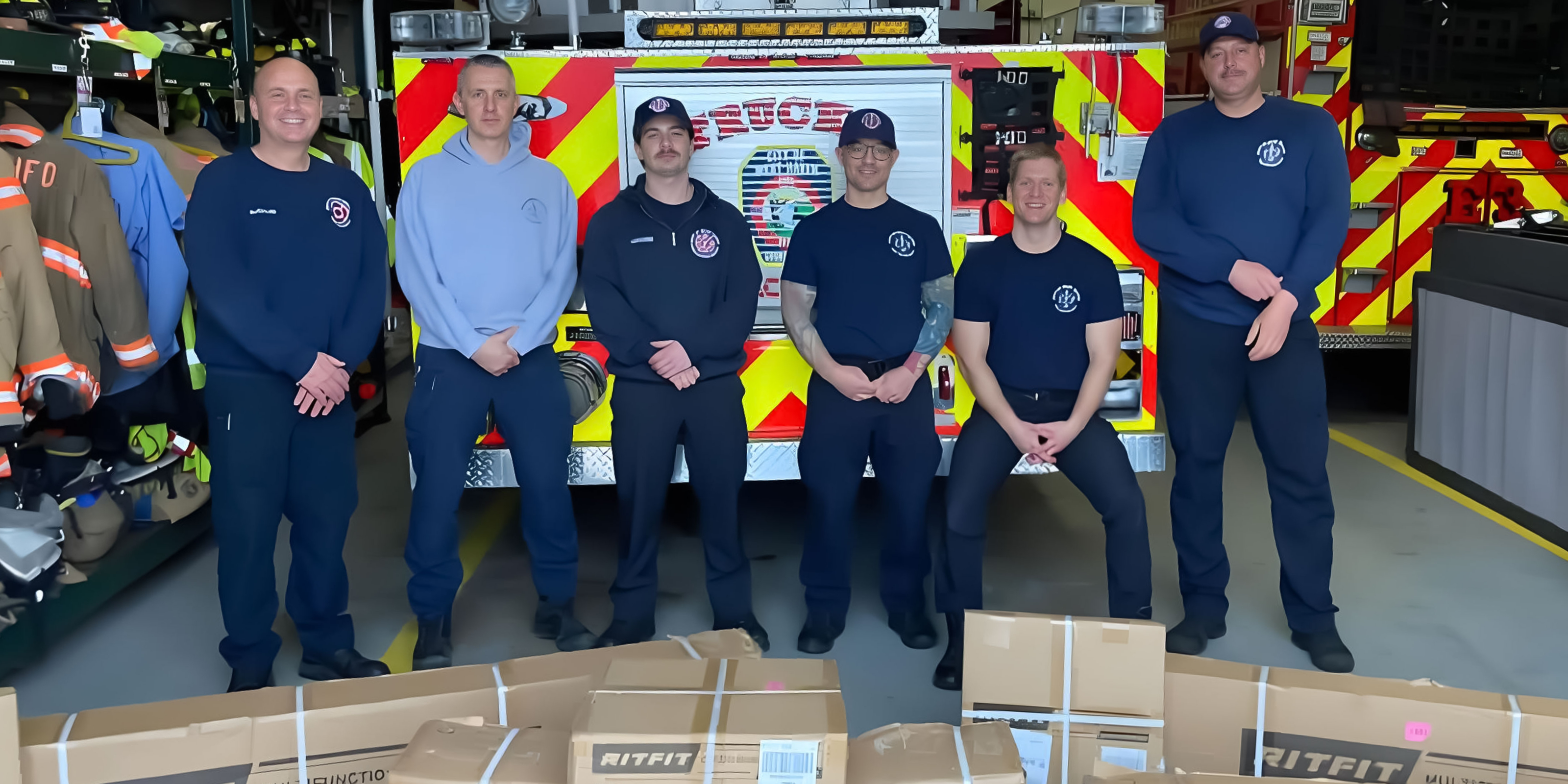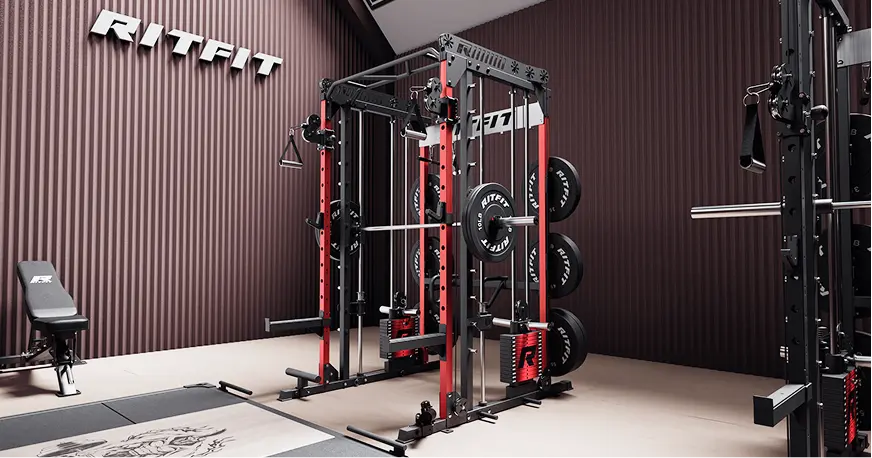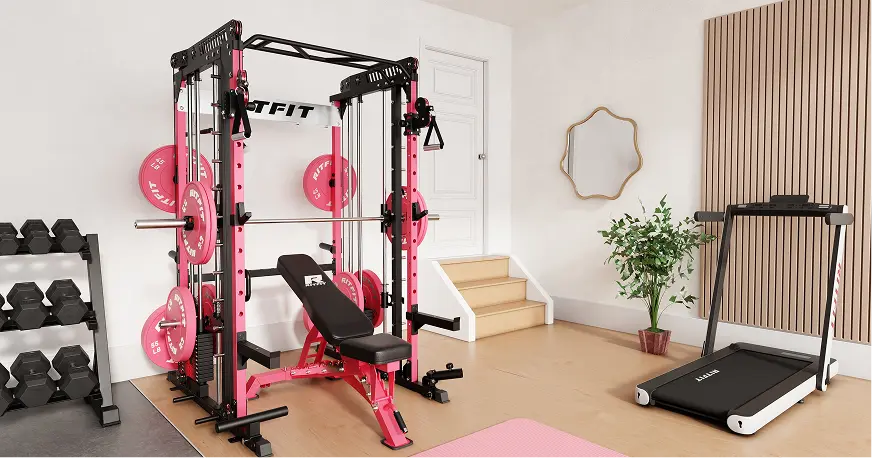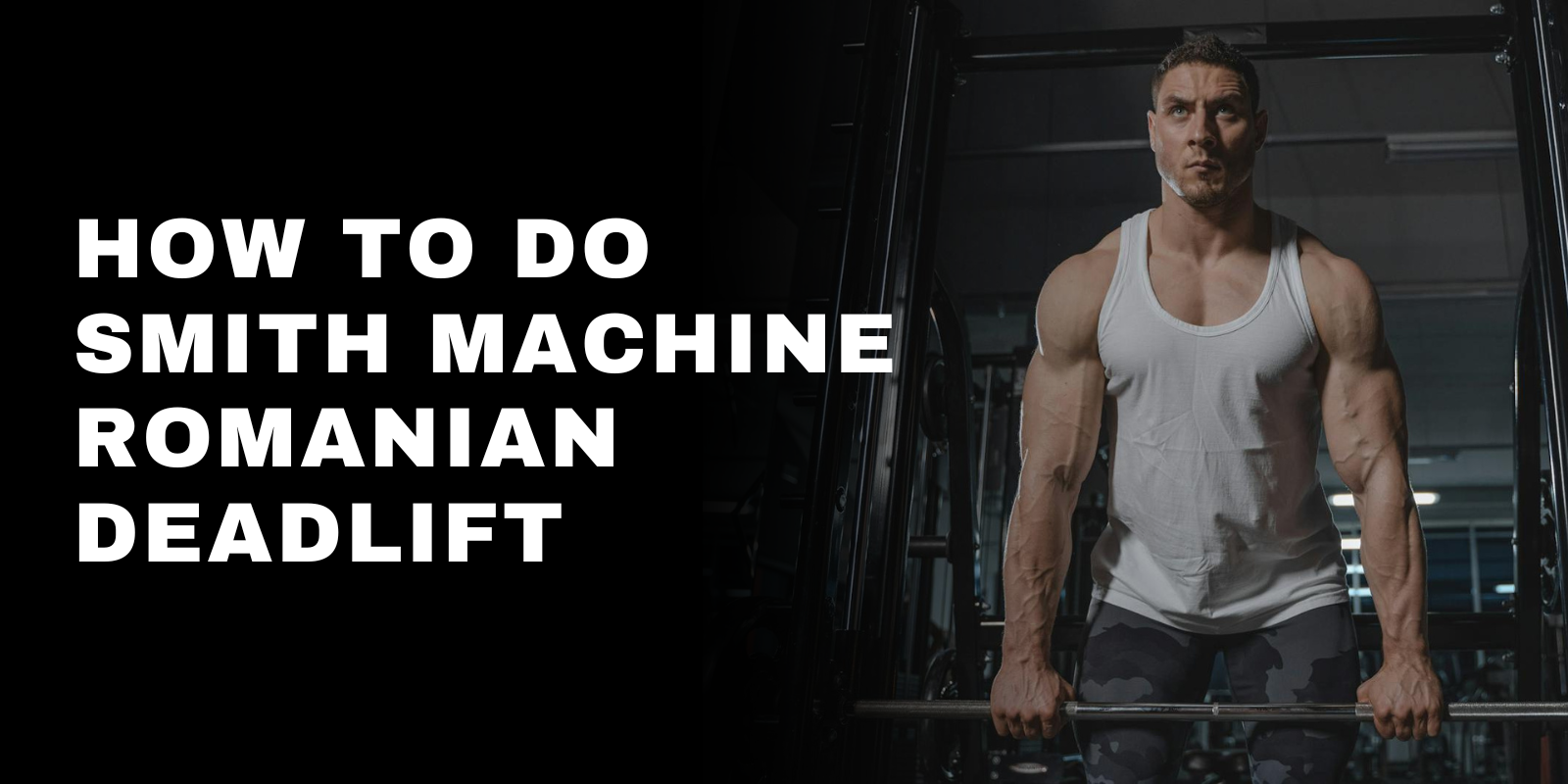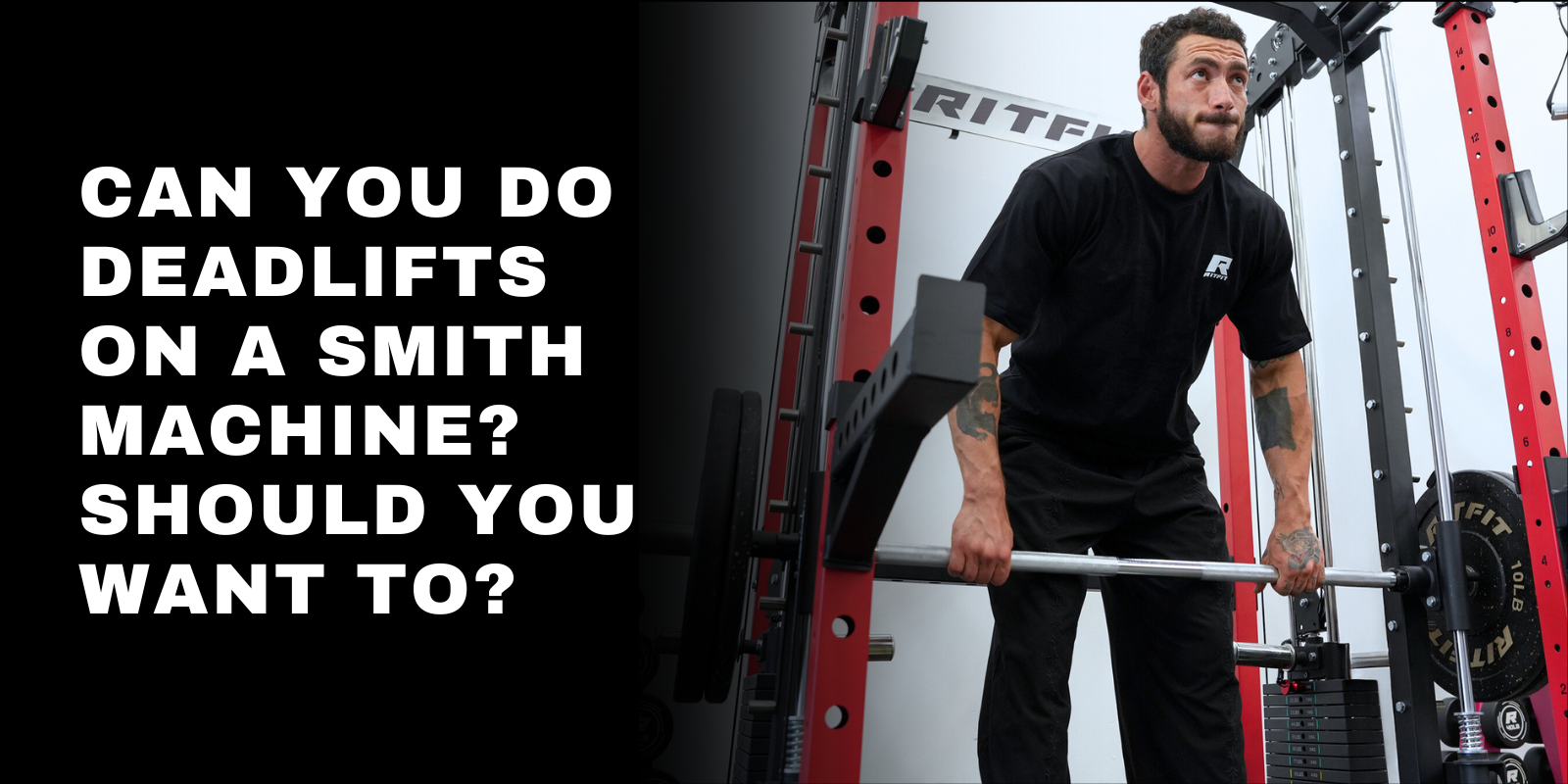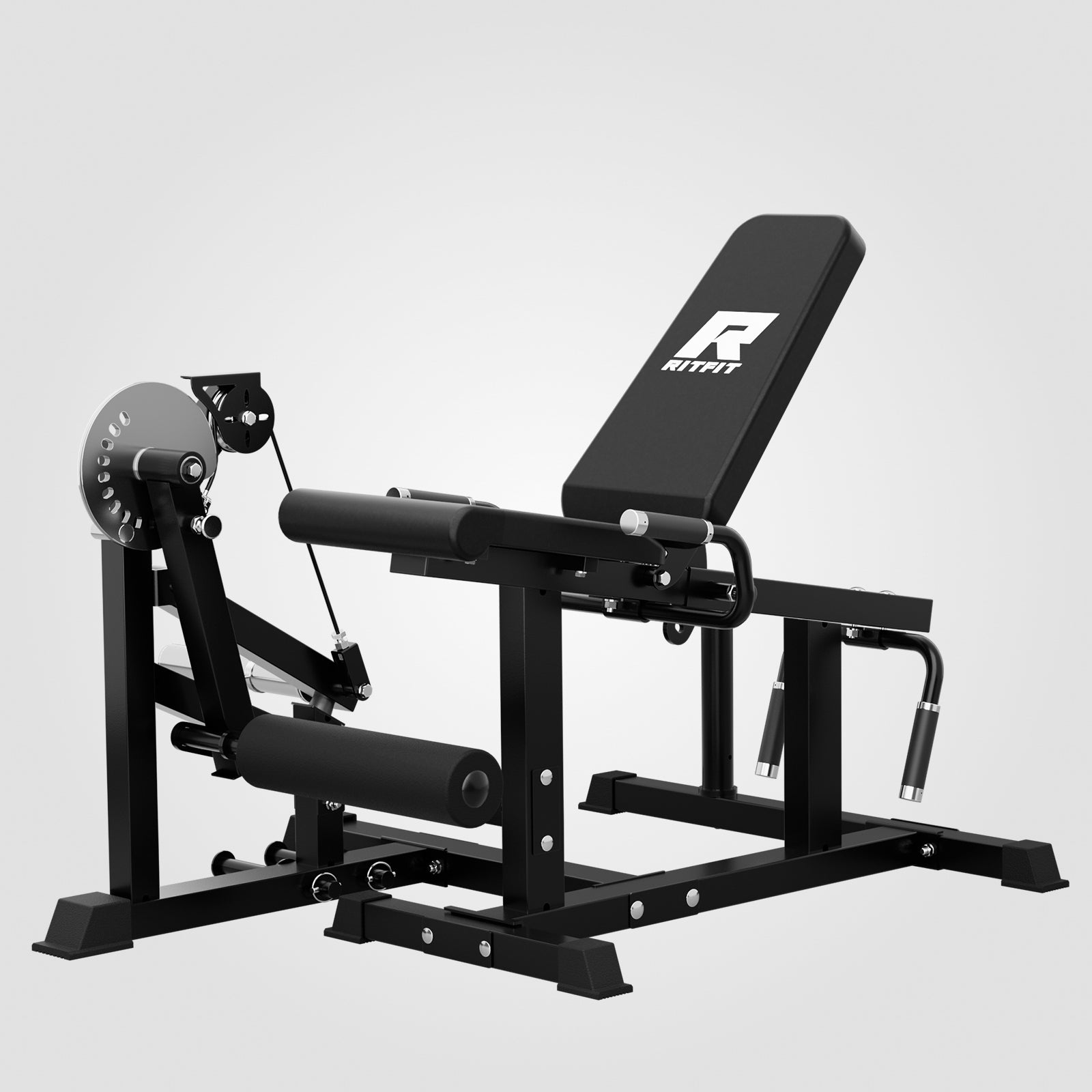Table of Contents
The Smith Machine bent-over row isn’t your standard gym exercise; it’s a way to build back with power, control, and muscular definition in one fell swoop. Whether you’re after width, thickness, or overall back development, this maneuver enables you to add muscle-mashing weight with pristine form.
Had trouble feeling your back really work when doing rows? You’re not alone. Too many lifters rely too heavily on their arms, often leading to broken form partway through the set. The Smith Machine solves that, holding you in place and forcing your attention to pure muscle activation. How can you do it effectively? Let’s get into the details of how to perform this for maximal gains …
The Benefits of the Smith Machine Bent Over Row
The Smith Machine bent-over row is an excellent exercise for anyone looking to target their back and maintain controlled, safe movement. It stabilizes the bar path & enables most newbie and veteran lifters to train their back muscles effectively without compromising their form.
Here’s why it’s worth adding to your routine:
Enhanced Back Development
This row primarily focuses on the lats, rhomboids, and trapezius; all of these muscles support a significant portion of your upper body and contribute to developing a wider, more defined back. You’re recruiting even the middle of your back and posterior chain, so it’s a compound movement that equates to significant muscle gains.
Safer Technique for Beginners
The guided bar path of the Smith Machine reduces the risk of improper form that often happens with free-weight rows. This makes it ideal for those who are still learning how to hinge correctly and engage their core without straining their lower back.
Increased Muscle Isolation
Unlike free-weight exercises, the Smith Machine does not utilize stabilizer muscles during the exercise, allowing your back to do more work. You can actually concentrate on contracting the lats and rhomboids more completely to promote better mind-muscle connection for improved hypertrophy.
Core and Posterior Chain Engagement
Once the bar is moving, bent-over positioning keeps your abs, obliques, glutes, and hamstrings engaged. When you brace your core to pull the bar, you activate the entire posterior chain, creating a functionally stronger and more stable body.
Versatility with Grip Variations
An overhand or underhand grip can change the focus to the upper and lower lats, biceps, and forearms. This turns the Smith Machine row into a versatile movement that allows you to focus on different areas of your back without changing exercises.
Excellent Alternative to Free-Weight Rows
The Smith Machine is an excellent alternative for anyone who doesn't have a barbell or dumbbells — or simply wants to take the load off their stabilizers. It provides an opportunity to stay in shape with increased load and enables steady and safe progress in strength.
Supports Balanced Upper-Body Strength
Regular incorporation of the Smith Machine row will also help build a strong posterior chain and address postural problems caused by chest-dominant training. Ultimately, this results in a more balanced and stronger upper body that not only looks good but also delivers improved performance.
Muscles Worked by the Smith Machine Bent Over Row
The Smith Machine bent-over row is a beast of an exercise that activates numerous muscles in your back, arms, and shoulders. Knowing which muscles are worked helps you optimize strength and growth while maintaining proper form during your movements.
Primary Muscles
Latissimus Dorsi (Lats)
During the row, the lats are the primary movers, driving your elbows back and pulling the bar down toward your torso. Getting them fully active expands the back and enhances strength and appearance.
Rhomboids
The rhomboids are also situated between your shoulder blades to help retract the scapulae, ensuring you stay in a proper position throughout the pull. They must be strong to avoid rounded shoulders and an imbalanced upper body.
Trapezius (Mid and Lower Traps)
The traps support the scapulae and help to pull the bar. Working these muscles helps improve shoulder health and gives you a strong, chiseled mid-back.
Secondary Muscles
Biceps
Although it is a back move, the biceps muscles are secondary players in this exercise, as they bend the elbows to help you pull. Finally, getting them recruited increases arm strength and aids pulling power.
Posterior Deltoids
The rear delts assist in stabilizing the shoulder joint and aiding the pull. This support will enable you to move more easily and help prevent lopsided shoulder development.
Erector Spinae
The spinal erectors help stabilize your torso as you lean forward. They also resist twisting and side-bending movements of the spine. Training them will optimize posture and help reduce the risk of low-back injury, while also building strength in the posterior chain.
Core Muscles (Abs and Obliques)
A braced core keeps your hips in place and prevents lower back strain, while promoting a safe lifting technique. Your rectus abdominis, combined with your obliques, must work together to keep you stable in the core as you move.
However, if you know the muscle it is targeting, you don’t have to worry about that and can simply focus on performing it with good form, feeling the mind-muscle connection for growth, so each repetition brings strength, hypertrophy, and total back development.
How to Do the Smith Machine Bent-Over Row
The Smith Machine bent-over row is a safe and controlled exercise that effectively engages your back muscles without the risk of injury. When you learn how to do it correctly, you effectively engage the lats, rhomboids, and traps in combination with the core and posterior chain.
Let’s break it down:
Step 1: Setup and Grip
Place yourself underneath the Smith Machine bar with your feet shoulder-width apart. Take an overhand or underhand grip, just a bit wider than shoulder width, with your knuckles facing forward (overhand) or up (underhand).
Step 2: Unlatch and Hinge
Release the bar to hinge at the hips, maintaining a slight bend in your knees. Keep a flat back and brace your abs to support your torso as you move.
Step 3: Starting Position
Hang the bar in front of your thighs at arm’s length. Your chest up and proud, shoulders back, and core tight – do not crane your neck forward.
Step 4: Pull the Bar
Exhale as you pull the bar toward your waist, with elbows pushing back instead of out. Concentrate on contracting your lats and rhomboids at the top of the movement.
Step 5: Lower the Bar
Exhale and lower the bar back down with control. And, make sure to control the negative – don’t let the bar fall and perform a rounded back or anything; just keep tension on all muscles.
Step 6: Repeat
Do the desired number of reps, staying in good form and controlled tempo for each rep. Once you reach the top, slightly pause to emphasize contraction, then keep going (depending on your program and goals).
Step 7: Rack the Bar
When your set is finished, get ready to ease the bar back down on the rack again. Just make sure the bar is fully locked in before letting go so you don't hurt yourself.
Mistakes to Avoid Smith Machine Bent Over Row
The bent-over row using the Smith Machine is an exercise to build the back; however, even slight flaws in form can hinder your results or increase your risk of injury. Once you know which risky behaviors to steer clear of, your reps will be effective, safe, and also focused on actual muscle activation.
Here’s what not to do:
Rounding the Back
Allowing the spine to round under as you perform the movement puts unnecessary strain on your lower back. Maintain a neutral spine at all times by keeping your core tight and hinging at the hips, not from the waist.
Using Too Much Weight
Overdoing it may cause you to lose control and move with a jerky motion. Choose a weight that is manageable and allows you to pull smoothly, so you can feel your back muscles working throughout the entire movement.
Over-Reliance on the Arms
If you are pulling with your biceps and not your back, you’re doing it wrong. Avoid flaring your elbows out and concentrate on pulling them back and squeezing your shoulder blades together; you should feel it in the lats and between the shoulder blades.
Standing Too Upright
A weak hinge angle discourages the use of the back, placing emphasis on the arms and shoulders. Hinge at the hips to a 45-degree angle, maintaining a stable torso and a tight core as you lift.
Not Controlling the Eccentric Phase
Allowing the bar to drop too fast will disengage your muscles, increasing the risk of injury. Lower the bar slowly under control to increase time under tension and induce greater muscle growth.
Ignoring Core Engagement
When you do not engage your abs, it puts the stability of your body in an unstable condition and also compromises your posture. Think about how you would brace yourself for a light punch to the gut—your abs should remain contracted throughout every rep.
Steer clear of these common errors, and you’ll train more intelligently, better safeguard your back, and extract even more from each rep of your Smith Machine bent-over row.
Smith Machine Bent Over Row Tips Form
The Smith Machine bent-over row can be an unusual exercise at first, but with some strong cues, you can make it one of your best back builders. Follow them to refine your form, elevate muscle activation, and safely rip through every rep.
Let’s get your form down:
Lengthen Your Back and Engage Your Core
No compromise on a neutral spine for this one. Contract your abs while maintaining a flat back; avoid arching or rounding out to protect your lower back and stabilize.
Drive With the Elbows, Not the Arms
Instead of pulling with your hands, try driving your elbows behind your body. This simple cue will do a better job of engaging your lats and keeping your biceps out of the movement.
Get The Full Range Of Motion
Drop the bar under until your arms are close to straight, then pull it up and in front of you. Passed through the full range, it ensures maximum muscle activation and promotes better strength gains.
Bar close to the Body
Allowing the bar to drift away also relaxes tension on your back, causing you to use your shoulder instead of your back muscles. Follow through, keeping the bar close, and slide just below your belly button for maximum lat isolation.
Avoid Flaring the Elbows
You can strain your back or shoulders if you flare your elbows out. Don’t do that, and concentrate on keeping your elbows tucked into your body slightly as you control the pull for safer, stronger reps.
Add a Squeeze at the Top
At the top of each rep, pause for a second and squeeze your lats. This additional contraction leads to a better mind-muscle connection, which further promotes hypertrophy in the long run.
Get these little details right, and the Smith Machine bent-over row goes from a garden-variety pull to an ass-kicking move that forces your back to grow thicker, stronger, and more defined.
Smith Machine Bent Over Row Vs Barbell Bent Over Row
The Smith Machine bent-over row and the standard barbell bent-over row will both be effective in creating a stronger, thicker back. Similar movement patterns: Pendlay Rows and Bent-Over Barbell Rows are very similar in terms of movement pattern, but they come with different advantages and disadvantages for changing how you train and what kinds of results you’ll get.
So, which is better?
Smith Machine Bent Over Row – Pros
The Smith Machine provides more stability, which can be helpful, especially when you are fatigued by the end of the lift. This enables lifters to concentrate on pulling in a controlled manner and contracting the muscles without worrying about balance or bar path.
Smith Machine Bent Over Row – Cons
The bar path is fixed, which means that stabilizing muscles, such as the lower back and core, are not as engaged. Additionally, some lifters argue that it doesn’t feel quite as “natural” as a free-weight movement might.
Barbell Bent Over Row – Pros
The free-weight variation encourages total body stability by engaging numerous stabilizers throughout the movement and can enhance your overall athletic abilities. It also allows you to adjust your bar path and grip more instinctively for a custom range of motion.
Barbell Bent Over Row – Cons
It requires more balance and core work, as there’s no guided track on the Smith Machine; this can be an issue for those starting out. However, it can also strain the back if not performed with proper form or if too much weight is used.
When to Use the Smith Machine
The Smith Machine row is perfect for targeting the lats and rhomboids, or for those who want to go heavy with minimal concern about stability. It’s a great option for hypertrophy phases or when you’re recovering from an injury and need additional control.
When to Use the Barbell Row
The barbell row is a staple in any functional or strength-based program, as it helps build core stability and total-body coordination. It’s ideal for lifters who are comfortable with hip-hinging mechanics and bracing techniques.
The Bottom Line
The effectiveness of strength training with free weights versus machine equipment is heavily debated. A 2023 meta-analysis revealed that free-weight versus machine-based strength training produced no significant differences in hypertrophy or jump performance when measured directly, suggesting that machine-based training can be as effective for muscle size as free weights[1].
One is not “better” than the other; they simply have different uses. Smith Machine for muscle isolation and control; barbell row for pure strength and athletic performance. Both should be part of a well-rounded regimen for full back development.
Final Thoughts
This guide provides a comprehensive overview of everything you need to know to perform the Smith Machine bent-over row safely and effectively. From setup and technique to form tips and common mistakes, you’ll learn how to maximize muscle engagement and build a stronger, more defined back.
Start incorporating the Smith Machine bent-over row into your training plan today to boost strength, improve posture, and unlock new levels of back development.
References
- Haugen ME, Vårvik FT, Larsen S, Haugen AS, van den Tillaar R, Bjørnsen T. Effect of free-weight vs. machine-based strength training on maximal strength, hypertrophy and jump performance - a systematic review and meta-analysis. BMC Sports Sci Med Rehabil. 2023;15(1):103. Published 2023 Aug 15. doi:10.1186/s13102-023-00713-4


